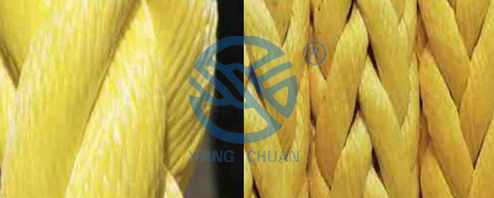vi er industri

Mooring tails are an essential component of any mooring system, providing the necessary length and flexibility to accommodate the movement of a vessel as it is secured to a fixed point. The choice of materials for mooring tails is crucial, as it directly impacts the safety, reliability, and longevity of the mooring system. There are several factors to consider when selecting the best materials for mooring tails, including strength, flexibility, abrasion resistance, UV resistance, and ease of handling.
One of the most common materials used for mooring tails is nylon, specifically high-tenacity nylon. Nylon is a popular choice because it offers excellent strength and elasticity, allowing it to absorb the shock loads and dynamic forces that occur during mooring operations. Nylon mooring tails are also highly resistant to abrasion, making them durable and long-lasting. Additionally, nylon has good UV resistance, which is essential for mooring tails that are exposed to sunlight for extended periods.
Polyester is another popular material for mooring tails, particularly in situations where high strength and low stretch are required. Polyester mooring tails have a higher breaking strength than nylon, making them suitable for larger vessels or in high-load applications. Polyester also has good abrasion resistance and UV resistance, making it a durable choice for mooring tails that will be subjected to harsh environmental conditions.
Polypropylene is a lightweight and buoyant material that is commonly used for mooring tails in smaller vessels or in applications where weight is a concern. Polypropylene mooring tails offer good strength and flexibility, but they have higher stretch characteristics compared to nylon and polyester. Polypropylene is also less resistant to UV exposure and abrasion, so it may not be the best choice for mooring tails that will be used in harsh environments.
Dyneema and other high-performance fibers are increasingly being used for mooring tails due to their superior strength-to-weight ratio and minimal stretch characteristics. Dyneema mooring tails are highly resistant to abrasion, UV exposure, and chemical degradation, making them a durable and long-lasting choice for mooring applications. However, Dyneema is more expensive than other materials, which may limit its use in certain applications.
In addition to the material itself, the construction of mooring tails is also an important consideration. Double-braided or three-strand construction is commonly used for nylon and polyester mooring tails, as it provides additional strength and flexibility. Heat setting or pre-stretching the mooring tails can also help reduce stretch and improve performance.
In conclusion, the best materials for mooring tails depend on the specific requirements of the application. Nylon and polyester are popular choices due to their strength, flexibility, and durability, while polypropylene is a lightweight option for smaller vessels. High-performance fibers like Dyneema offer superior strength and minimal stretch characteristics but come at a higher cost. Ultimately, the selection of materials for mooring tails should be based on a careful evaluation of the operational requirements, environmental conditions, and budget constraints to ensure safe and reliable mooring operations.
Adresse:
No.8 Chengnan road, chengnan industripark, Baoying fylke, Jiangsu Kina
E-post:
E-mail1:vanzer@xcrope.com Vanzer Tao
E-mail2:sales@xcrope.com Wang Peng
E-mail3:grace@xcrope.com Grace Li
E-mail4:info@xcrope.com David Cheng
Firmatelefon:
+86-514-88253368
Oversjøisk salgsavdeling:
+86-514-88302931



Copyright av © Jiangsu Xiangchuan Rope Technology Co., Ltd. | Alle rettigheter reservert